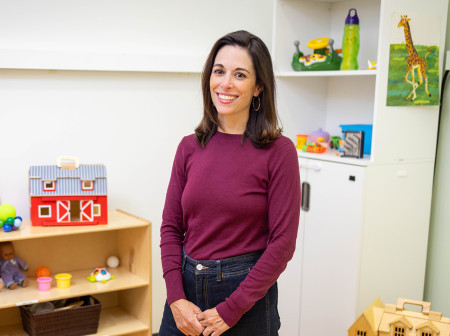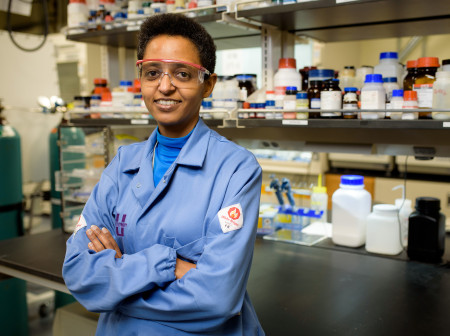Several fortunate twists of fate led me to Northwestern. As a high school student in rural Pennsylvania, I was interested in math and science. But while my brothers had pursued physics, medicine and geology, I wanted to chart my own course. At Dickinson College, I chose to study chemistry.
I fell in love with chemistry because of people. At Dickinson, professor Harry Roper gave me my first lab experience and introduced me to the chemistry of gold, which I still study today. At Penn State, professor Greg Geoffroy, my doctoral adviser, taught me to be a coach and mentor. At MIT, professor Mark Wrighton showed me how to lead with passion and relentless drive.
I landed at Northwestern in 1991 thanks to persistence and a bit of luck. I reached out to the chemistry department several times until, finally, professor Jim Ibers said there was an unexpected opening. He invited me in the next week, and it was the best interview I ever had. The vibe, environment and faculty were perfect for what I wanted to do: build a world-class laboratory that would push the frontiers of inorganic chemistry.
When I arrived on campus, I had the freedom to try new things. The materials science and engineering department had a scanning probe microscope, a tool used to determine the topology of surfaces at the atomic scale. I had never even seen one before, but I taught myself how to use it. Before long we had built one of the largest scanning probe operations in the world, which enabled the rapid growth of nanotechnology at Northwestern and led to the invention of techniques that have revolutionized aspects of materials discovery.
The collaborative nature of research here has made all the difference too. One case in point is the development of spherical nucleic acids (SNAs), which are nanoparticle structures modified with bits of DNA or RNA. Due to their unique size and structure, SNAs can actively enter cells, cross biological barriers and serve as the basis for new genetic medicines.
The inspiration for SNAs came to me during a conversation with chemistry professor Joe Hupp. We’d heard a talk about trying to make colloidal crystals from nanoparticles, using small molecules to bond the particles together. In nature, colloidal crystals control the color of butterfly wings, for example. In the lab, they can be used to create a wide variety of optical devices. That got me thinking: DNA has the highest information content of any polymer, so we could use it as a programmable bond. Our research group began to repurpose the “blueprint of life” to make new materials that can be programmed for use in diagnostics, therapeutics and drug delivery, giving us new tools to study, track and treat disease, including deadly cancers.
Back in the 1990s people thought nanotechnology was a gimmick. But I saw it as a once-in-a-lifetime opportunity. East Coast schools had a head start in many disciplines due to their ages. But with an emerging field like nano, everyone was starting at the same time. Northwestern had a chance to be the best. President Henry Bienen ’09 H understood that and made the financial investment we needed to launch this effort, and President Morton Schapiro doubled down. Now the International Institute for Nanotechnology (founded at Northwestern in 2001) has raised more than $1 billion for research and educational initiatives. We’ve competed for — and won — some of the largest grants in science, and we have attracted some of the best students and faculty in the world to Evanston. Indeed, Northwestern has become a world leader in nanoscience and nanomedicine.
In the end, my story isn’t really about twists of fate. It’s about a community where ambitious work can be done. It’s about a university committed to solving big problems. With those values in place, great opportunities naturally arise.
Chad Mirkin is the Director of the International Institute for Nanotechnology and the George B. Rathmann Professor of Chemistry.




Reader Responses
No one has commented on this page yet.
Submit a Response